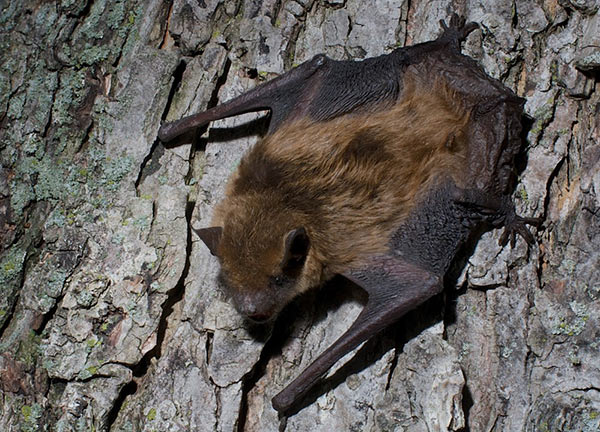Big Brown Bat

One of the most commonly observed bats around southern Ontario, including the Greater Toronto Area, although they are less common further north of here. If you see a bat in your garden or in the park in the evening, there is a good chance it is one of these! Big browns here seem to be doing well, but they are susceptible to White Nose Syndrome, so it is important to keep an eye on them.